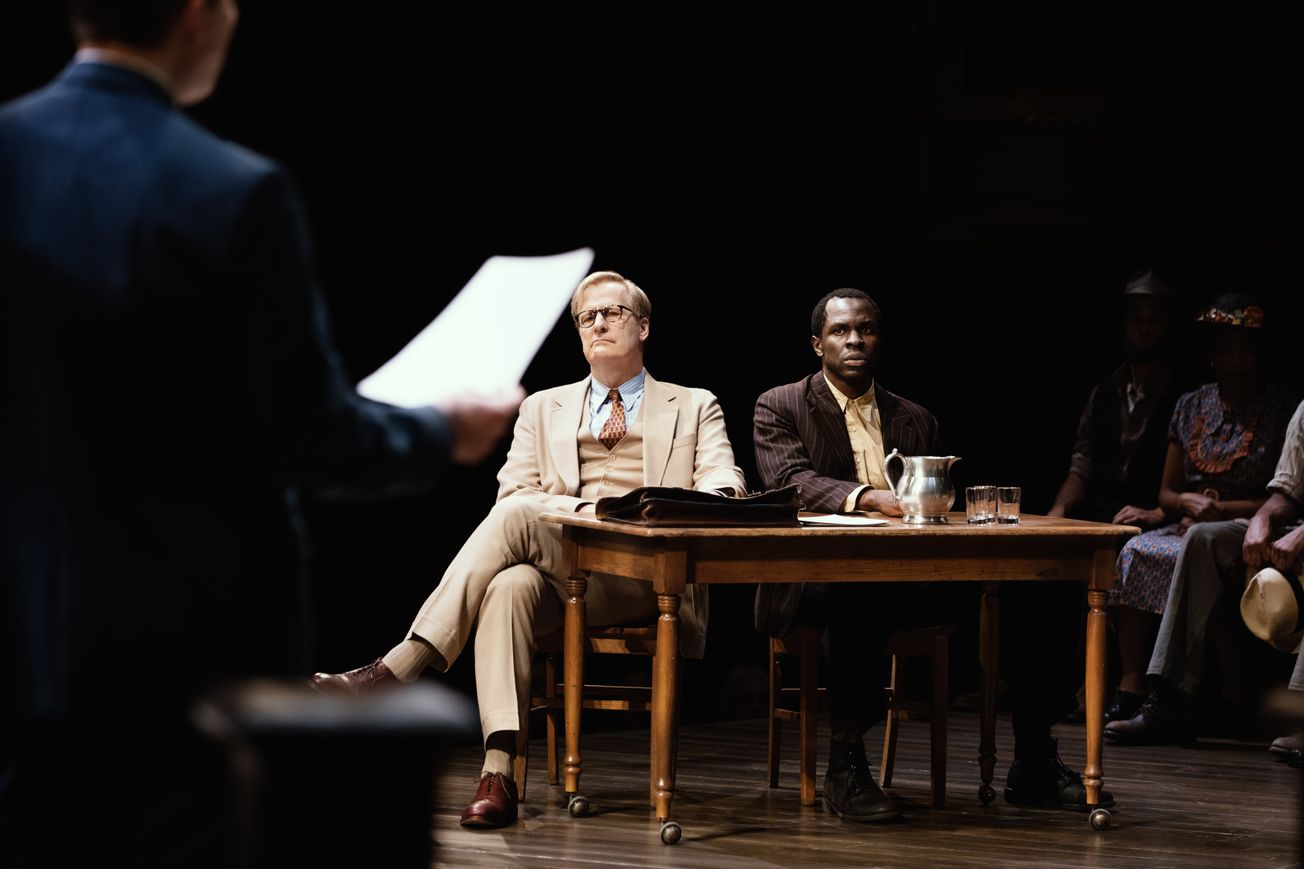Despite penning multiple award-winning television series and films, Aaron Sorkin still feels more at-home writing plays.
“To me, corny as it sounds, theaters are like cathedrals and the Shubert is St. Patrick’s,” Sorkin said.
Sorkin, who grew up attending plays with his parents, has previously written “A Few Good Men,” which helped launched his movie career, and “The Farnsworth Invention,” for Broadway. Now, he’s returning to his first love with an adaptation of “To Kill a Mockingbird,” with the challenge of meshing his now-famous writing style with the well-known storyline and language of Harper Lee.
One of the first challenges for the cast was finding the balance between the slower-paced, Southern drawls of the “To Kill a Mockingbird” characters and the Sorkin tenet of fast-paced dialogue. Celia Keenan-Bolger, who plays Scout, began by visiting Monroeville, Alabama, where Lee lived, to get a sense of the dialect and the “energy around it.”
“It’s funny because I think he’s done such an amazing job of giving all of the characters their own voice. I think that foundation really is Harper Lee, she created that,” Keenan-Bolger said. “But there is a definite rhythm.”
The rhythm, in fact, is key to mastering Sorkin’s dialogue for the play, according to Gideon Glick, who is portraying Dill Harris, friend to Scout and her brother Jem.
“It’s very alliterative, and so it has this kind of Shakespearean way, this floating quality, so the Southern accent kind of rides it,” Glick said, noting that while they do walk as well as talk in the play, it’s not in the expected manner.
Before the play came to Broadway, Lee had approved of Sorkin to adapt her novel into the Broadway play. But, after Lee’s death, her trustee sued producer Scott Rudin over what she saw as departures in the script from the “spirit of the novel.” The lawsuit was settled, after, as Sorkin detailed in Vulture, he removed minor vices he had given to Atticus.
According to the cast, the Sorkin play has shifted the focus to Atticus as the protagonist as well as expanded the roles of Calpurnia and Tom Robinson, and has broken out of the linear storyline into a memory play. On Broadway, the child characters are notably played by adults, which helps with the demands of the roles and the complex dialogue.
The cast began finding their way into the roles through workshops held with the creative team in the winter of 2017. While some turned to the novel early on as research for their roles, most, including Jeff Daniels as Atticus Finch, found that they needed to approach the classic characters as if they were new.
“We said, ‘Originate the role.’ It hasn’t been done before. Ignore Gregory Peck,” Daniels said. “I mean, people are going to come in going, Gregory Peck or the book, and they’re going to cling to it. That’s not been on my radar. It just can’t. Otherwise I’m deluded, and I’m less. So we gotta go in face first, and that’s what we did.”
Still, when facing the Broadway audience, many of whom have grown up with the story, the book and the movie loom large.
“I think the hardest part of being in this production is expectation and my own expectations. I love this book so much. I love the movie so much. I think a lot of people come in with that, and it’s like, ‘Don’t mess this up,’” Keenan-Bolger said. “But I can say that halfway through the first act, I usually feel like, ‘Oh, OK, they’re on our side. We got them.’”
According to the cast members, the audience reception thus far has been both audible — Stark Sands, playing Horace Gilmer, the prosecutor bringing charges against Robinson, says he gets booed and hissed by patrons — and palpable.
Both Sorkin and Daniels said that the theater audience has made the production come alive, a feeling that, for both, beats out movies and television every time.
“There’s an electricity you can feel just as the house lights go to half, and that you continue feeling when they start leaving the theater after the curtain call,” Sorkin said. “They’re vibrating, and I just love that. I just love it.”


























































